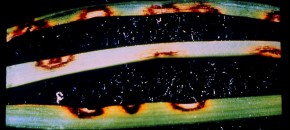“Are you a grower? Got stink bugs? We need your help! We’re surveying growers to assess the impact of BMSB on crops and gathering information that will help us defeat this pest. Receive a free Guide to Stink Bugs* if you complete the 10-minute BMSB survey” https://cornell.qualtrics.com/SE/?SID=SV_5ssnjXLNhvp6v1H Thanks in advance! – From the Northeast IPM […]
Continue reading...Corn Herbicides and Soil Insecticide Interactions
Over the past few years, a few fields have been treated with an organo-phosphate insecticide and then with an ALS-inhibiting herbicide and significant injury has occurred. A number of corn herbicides have label precautions about use of an organo-phosphate insecticide at planting due to potential crop injury. This includes the insecticides Counter (terbufos), Lorsban (chlorpyrifos), […]
Continue reading...What’s the Difference Between Metolachlor Formulations?
I have been asked by a few people about the differences in metolachlor (the active ingredient in Dual) products. The “old” Dual in the early 1990s was two isomers of metolachlor, R and S isomers. The Dual II included a safener to improve crop safety (improves safety to corn, not to broadleaf crops; hence Dual […]
Continue reading...Be Sure to Scout No-Till Fields Before Planting
The weather has not been favorable for maximum effectiveness of many postemergence (or burndown) herbicides. Cool weather and overcast skies are not ideal conditions for herbicide performance. And given that many fall and early spring emerging weeds can be difficult to control once the crop is planted, it is important to scout your no-till fields […]
Continue reading...Got Plans for Monday Morning?

If you are managing high value turf areas, like a golf course putting green, I hope you are watching the weather. By most accounts, we are in for some cold rain next week. High temperatures in the low 50s and a 90% chance of rain from Tuesday through Thursday are imminent. Crummy cycling weather, but […]
Continue reading...Leaf Spot and Melting-Out is Active

The leaf spot phase of this disease, caused by the fungus Drechslera poae, is apparent on susceptible Kentucky bluegrass turf at this time.
Continue reading...